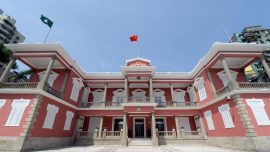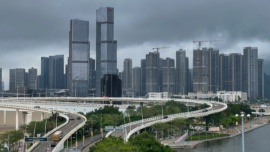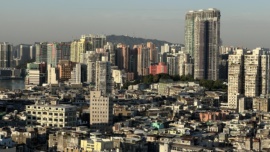
Macau Business | September 2021
By José I. Duarte | Economist, Macau Business Senior Analyst
For the Macau economy, the second quarter of 2020 was the most brutal one most can remember – and certainly worse than anyone might have imagined.
The economy started to pick up a bit in the second half of that year, and great expectations grew about the much-desired recovery this year. The Gross Domestic Product figures for the first quarter were not entirely reassuring. As might be anticipated, the GDP figures for the second quarter were eagerly expected.
On a superficial approach, numbers may look encouraging. Year-on-year comparisons are inevitably flattering. Yet, the reasons for concern identified in the first quarter persist, and the outlook is less optimistic than we might hope. As the press release from DSEC points out in several instances, we compare the latest results with a very low base in the same period last year. After all, this economy had more than halved in 2020, and the second quarter was its worst period.
Then, the city came to a virtual standstill. Same-period comparisons are bound to provide startling growth rates. Those figures must be used with care, if at all. Alone, they carry little information of relevance for a clear-headed assessment of where we stand.
If we take the figures for the first half of this year, GDP is still, in nominal terms, only marginally above the 50 per cent of the 2019 level. By any standard, that is still a striking depression.

Expenditure by visitors, the main driver for the economy, is still very far from the previous figures – just a tad over 40 per cent of the 2019 results. Gaming expenditure, its main component, was still below one-third of the similar figure in the first half of the last ‘normal’ year. The occasional improvements seen in a couple of moments this year failed to provide the much-needed traction, and there is certainly no hint yet of a steady recovery. These months have been characterized mainly by ups and downs, with no steady underlying trend. Private investment has also been declining over the last few years and is unlikely to pick up until the horizon line becomes clearer.
On the brighter side, private consumption has mostly recovered, suggesting an improvement in the general expectations and positive effects of the consumption incentives. Moreover, government expenditure is also rising. These features provide grounds for some optimism. But such optimism may not be sustained if the uncertainty about the economy endures.
Indeed, there is a good deal of resilience provided by the region’s economic buffers, namely the flexibility afforded by the non-resident labour force and the size of the financial reserve. But even those will wear out over time. Confidence in the future, critical as it is, cannot be maintained forever without some idea about the bearing of the economy.
Anyway, as internal demand approaches pre-pandemic levels, we still must bear in mind that it typically amounts to just about half of the economy. The other half is still missing. Adding to the uncertainty, the end of the gambling concessions is approaching. There are many unknowns about the government plans on that matter. It is not clear that the recent report from a Legislative Assembly commission on the subject helped to dissipate the fog surrounding it.
Further, the Covid no-cases approach adds to the uncertainties. The policy, which served the city well in the first phases of the epidemic, is looking increasingly unsustainable. As the virus becomes endemic and the egregious failure in vaccination coverage persists, there is a rising need to re-evaluate the costs (and risks) of the current approach – in human, economic, and (also) health terms.
























